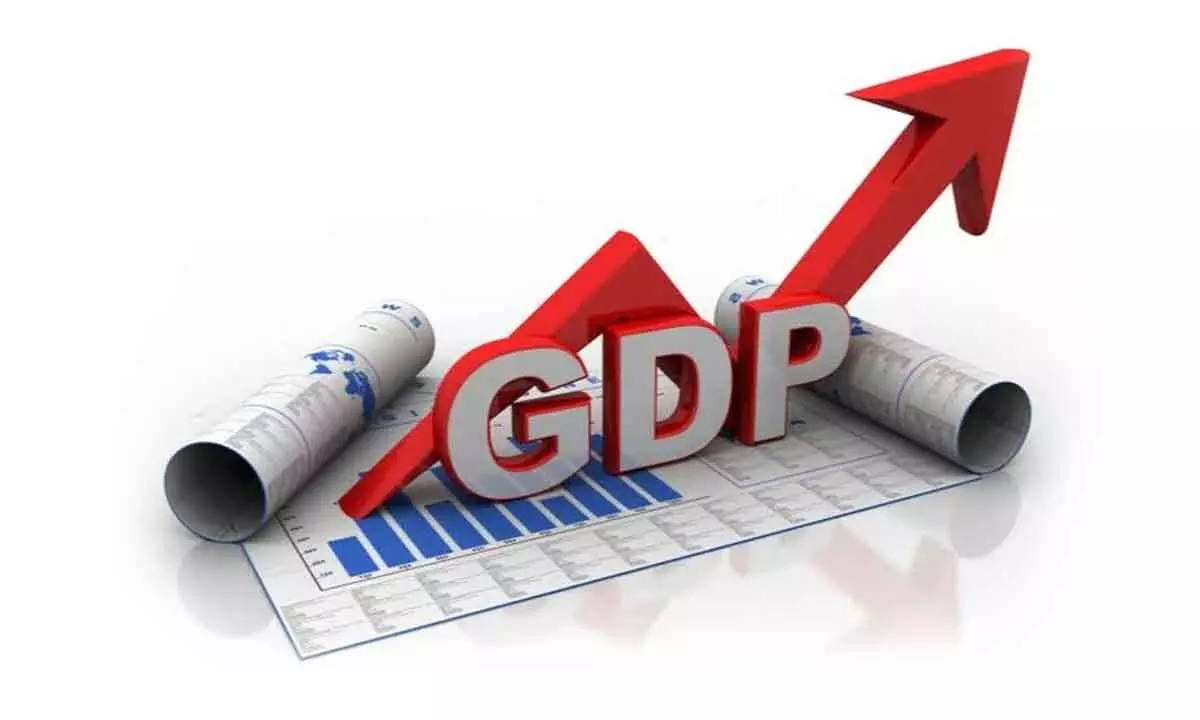GDP-obsessed India should focus on addressing the ground-realities
By the year-end,India will displace Germany to become the world’s fourth largest economy
image for illustrative purpose

In nominal terms (Real GDP plus inflation), India’s growth rate in 2024 would be more than 10%, which means its GDP would cross $four trillion
The harsh reality is that India will remain the country that will be home to the largest population of poor people in the world. The numbers will be more than 200 million, about as much as the combined population of the UK, France and Germany
The recent years have witnessed a shift of economic power and attention towards the strengthening economies of BRIC countries-Brazil, Russia, India and China. The growth rate of the gross domestic product (GDP) in BRIC countries is overwhelmingly larger than in traditionally strong economies like the United States and Germany.
While the United States can claim the title of the largest economy in the world by almost any measure, China nabs the second-largest share of global GDP, with India closing in on Japan for the third-largest position.
Despite the world-wide recession in 2008 and 2009, India still managed to record impressive GDP growth rates, especially when most of the world recorded negative growth in at least one of those years.
Everyone is obsessed with the certainty of India becoming the fourth-largest economy in the world sometime during this decade. The optimists say that this will happen by the end of 2026, while some say it will not happen till the end of 2028. By the time India exits 2024, it will almost certainly displace Germany and become the fourthlargest economy in the world. The numbers are very clear. The GDP of Germany is estimated to be $4.4 trillion by early 2024, while that of India is estimated to be a shade over $four trillion. If India maintains its growth momentum and Germany continues to grapple with recession through 2024, the GDP of both countries will start converging by the end of the year. In nominal terms (Real GDP plus inflation), India’s growth rate in 2024 would be more than 10%, which means its GDP would cross $four trillion. Even in real terms, the Indian GDP will certainly surpass that of GDP in 2025.
Come October 2024 and coalition politics will be back with a vengeance. Haryana, Maharashtra and Jharkhand will go for assembly elections in October. It is virtually certain that no single party will win a majority in Maharashtra and Jharkhand. Going by current trends, a similar fate awaits Haryana. In the event, dominant or not, the BJP will have to make deals with regional parties if it becomes the largest party. There is also a high chance of the so-called INDIA winning at least two of the three states. Either way, the talk of the town in October will be the art of stitching coalitions.
Amidst a collapse in political support and decimation in West Bengal since 2011, communists took comfort from one fact: JyotiBasu was the longest-serving chief minister of a major state. Even that consolation prize was gone with the wind in July 2023 when the unassuming Naveen Patnaik of Odisha displaced Basu from that hallowed perch. Pawan Kumar Chamling of Sikkim still holds the record as the longest-serving Chief Minister with over 24 years in the hot seat.
The harsh reality is that India will remain the country that will be home to the largest population of poor people in the world. The numbers will be more than 200 million, about as much as the combined population of the UK, France and Germany. There are various measures of poverty floating around. If you go by the World Bank's definition of poverty (per capita income of less than $2 a day), about 10% of Indians, or about 140 million, are poor. And no matter how much you believe in the power of “feel good”, the number will stay above 200 million in 2024.
Another data point will confirm how India still struggles with poverty: 800 million Indians will get “free food” by 2028. That is expected as a series of CVoter surveys through 2023 have revealed that more than two-thirds of Indians find it very difficult to manage household budgets.

